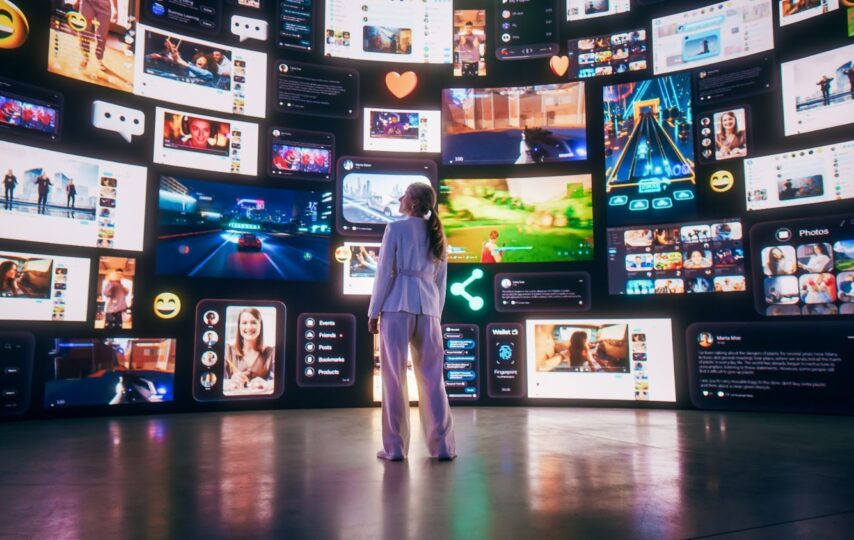The way that people consume entertainment has changed dramatically as a result of streaming video, a service that has been operating for far longer than most people realize. Watching media on a TV or gadget at your convenience from a variety of sources and providers is the fundamental idea behind streaming. For the past 25 years, the technology behind streaming video has advanced rapidly and altered over time. After World War II, coaxial cable (CAT5) was first used, and things have been changing ever since
The Arrival of Cable TV
Cable TV has been around since the late 1940s, but was limited primarily to areas that had problems withdrawing in an over-the-air signal. It wasn’t until the late 1970s that large-scale commercial cable systems began rolling out and signing up subscribers. Even then, cable companies were typically local operations that served a few towns at a time.
The concept of paying for TV channels through a coaxial cable hooked up to a box was an exciting one at the time. It offered the opportunity to receive fresh and new TV programming that went beyond what was offered on the handful of local TV channels. Cable TV also delivered a clean and steady image that TV antennas simply couldn’t compete with. Sound quality was also much better due to the fact the content was delivered through a hardwired source instead of an over-the-air signal.
How TiVo Revolutionized Time-Shifting TV Shows
The commercial success of the VCR eventually led to a digital version known as the TiVo in 1999. The VCR revolutionized how people watched TV through a concept known as time shifting. In short, the VCR allowed its owner to record a TV show and watch it at their convenience instead of its broadcast time. However, the resolution of the VCR tape was poor and didn’t deliver a crisp image.
The TiVo took all the aspects of the VCR and converted it into a digital recorder. No longer was there a need for physical media in the form of a VCR tape. Instead, the TiVo took the video signal and compressed it into a file that could be saved in real time on a hard drive. The video and audio quality was also much better than a VCR tape.
RealPlayer Introduces the Concept of Livestreaming on a PC
RealPlayer, originally known as RealAudioPlayer, predates the TiVo by four years, but its adoption among PC users took time. RealPlayer enabled live streaming and made it easy for computer users to play movie files. However, the resolution of the player was low due to the limitations of modem speeds, hard drive sizes, and video cards during the 1990s. Most users weren’t bothered by the low resolution as the ability to play live videos that were once only available through broadcast or cable TV was revolutionary.
As time passed and computer hardware improved, so did RealPlayer. It evolved to play a variety of files that included video, audio, and still images. Users were able to watch or listen to live or recorded content from the convenience of their computer and enjoy high-resolution images as well. The player offered the ability to customize the player with different skins and plug-ins, visualizations that created random patterns in time to the music that was being played, and equalizers to fine-tune the sound.
RealPlayer was and is a standalone program that runs outside a browser, but it also has a browser extension. If you’re planning on using it in your browser, make sure to use a VPN to protect your computer from unknown sources.
YouTube Gives Content Creators a Platform
Since its beginnings in the late 1940s, cable television has mostly served areas that experienced difficulties with over-the-air signal withdrawal. Large-scale commercial cable networks did not start to roll out and take in customers until the late 1970s. Even back then, most cable companies catered to a small number of communities at a time and were mostly local businesses.
Video resolution during the early days of YouTube was 360p, with the leap to 480p being made in 2007. In 2009, 1080p resolution became available, and the site made the transition to 8k video in 2015. In 2016, users were able to livestream with 360° and 1440p resolution. YouTube represents the progression in digital video resolution that affected everything from computer graphic cards to flat-screen TVs.
Content creators and viewers flocked to YouTube because it offered an alternative to scripted television and weekly episodes. While YouTube didn’t introduce the concept of binge-watching, it did change how people consumed their entertainment. The opportunity to follow a content creator’s channel and get updates whenever a new video was uploaded made it easy for viewers to get a slice of someone else’s life. The wide variety of content available on YouTube also opened up a viewer’s world as they were able to watch how a content creator engaged in a passion, made a piece of art or jewelry or learned how to repair their cars.
YouTube itself has been a steady and reliable provider of content, and its use of high-resolution streaming lets the viewer get the visual detail they’re seeking. Pausing a video and zooming in on the still image reveals information that may otherwise be difficult to find, something that can be invaluable to the viewer.
Twitch Opens up the World of Livestreaming to Everyone
Twitch, formerly known as Justin. tv, essentially one-upped YouTube by enabling its content creators to stream live. YouTube also had this capacity, but didn’t emphasize it as much or encourage streaming culture. Twitch took advantage of this fact and created a platform for gamers to share their gameplay experience with friends, family, and strangers that happened to find their streams.
Streamers from around the world found that Twitch provided them with a comfortable place for sharing, and encouraged them to develop a style or persona. The site also fostered relationships between the streamers and their chat participants, encouraged the use of emojis for expression in the chat, and made it easy for the chat to interact with the gamer by triggering sound and video clips while the gamer plays.
Perhaps the best part about Twitch is that content creators who don’t have high internet speeds can still stream at lower resolutions, and the same goes for their viewers. Everyone gets to participate in real-time without worrying about their internet lagging and causing a loss of video.








